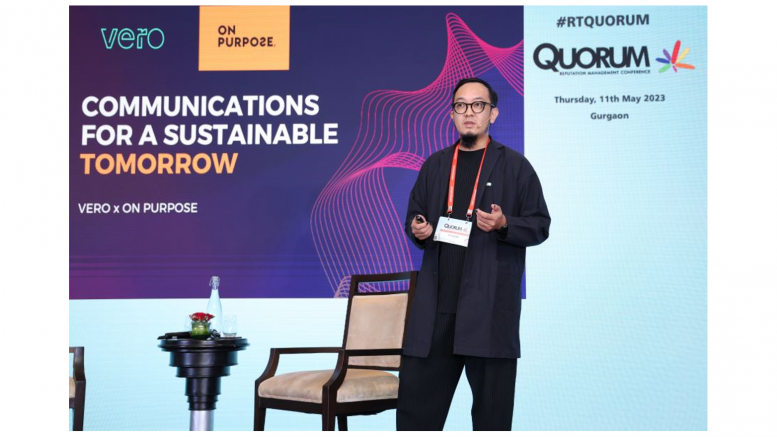“Greenwashing” as we know, is a huge growing concern in today’s business world. Brands go all out to present themselves as sustainable and environmentally responsible against the background of increasing consumer demand for environmental-friendly products/services. A marketing spin which is deceptively planned and used to create a an ‘environmentally friendly’ brand image can really lead to disaster. In the marketplace, while some make genuine efforts to reduce their environmental impact, others use misleading or false environmental claims to “greenwash” their image and thus, appeal to environment-conscious consumers.
It was all about communications for a sustainable tomorrow. Vu Quan Nguyen, VP, Culture & Brand, ASEAN, Vero held centre-stage as he spoke on “Sustainability in the Brand World”. Born & trained in France, he relocated to Vietnam in 2013, and was involved in working with brands supporting a strong cultural, creative agenda. Vu-Quan elaborated that he seeks to bridge the gap between sub-cultures & public, institutional influence.
Admitting that “We have taken a pledge for ‘clean creatives’” he announced that the perspective he brought to the stage, was actually rising to the challenge, with the main issue being – greenwashing.
What are the seven sins of greenwashing? These sins [identified by Terrachoice in 2007], assist consumers in identifying and understanding misleading and/or false environmental claims.
- The sin of the hidden trade-off
- The sin of no proof
- The sin of vagueness
- The sin of worshiping false labels
- The sin of irrelevance
- The sin of the lesser of two evils
- The sin of fibbing
“The seven sins of greenwashing were conceptualised a long time ago, but sustainability is always a moving target. A goal that has to be achieved daily,” elaborated Vu-Quan.
Greenwashing involves great storytelling. “That’s the worst they can do in sustainability”, he shared.
And, where do companies sit when it comes to sustainability? Either they are ‘greenwashing” or they keep silent, which is bad. “Green painting is interesting and it can improve the brand’s reputation,” he pointed out as he shared the case study of Asian Bank educating children on what they are doing to fight in-house gas emissions.
Today it is interesting to access, re-access and make continuity plans. What are the strategic choices? Move onto do research – to access the situation and communicate properly.
It is critical that brands should ensure that they aren’t damaging customers’ trust by greenwashing. Greenwashing has evolved over time, but it’s certainly still around. As the world increasingly embraces the pursuit of greener practices, we see organisations facing litigation for misleading environmental claims.
How do we accept that change? Here’s where corporate vulnerability comes in. How do we bring in the right language and a bit of modesty too? It’s critical to retain hope and positivity – by engaging stakeholders and leveraging social media for the greater good.
In conversation with Shibani Kumar, Creative Director, ON PURPOSE, the question was imposed on him – why is it that often the intension is good, but it gets lost in translation? What should we keep in mind? It’s really about stakeholder engagement, he stated. Accepting responsibility is key. Don’t take the blame, but accept the responsibility.
So, by and large the message is – Do your best to tell your company’s sustainability story but avoid “greenwashing”. An obvious message. But, unfortunately not taken seriously at times.
The views and opinions published here belong to the author and do not necessarily reflect the views and opinions of the publisher.






Be the first to comment on "Sustainability in the Brand World"